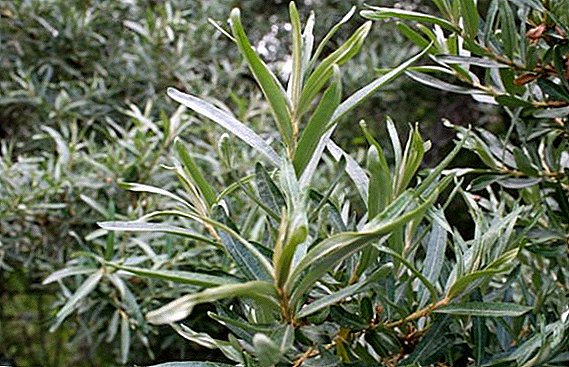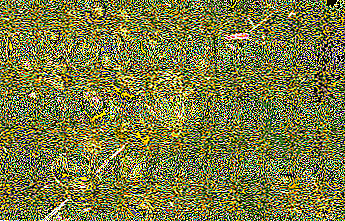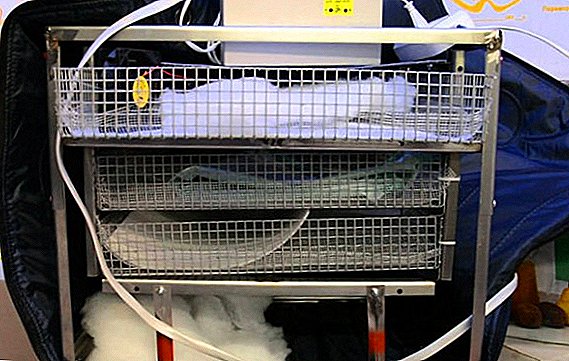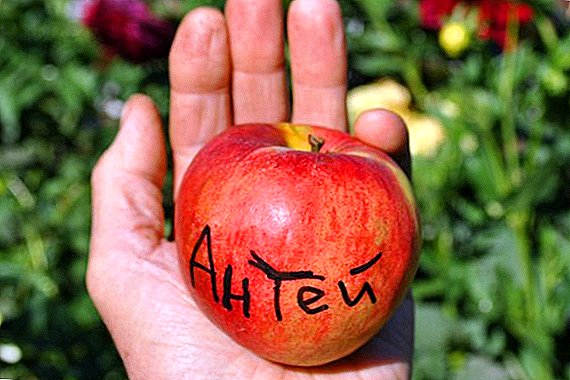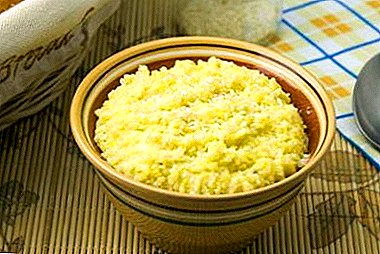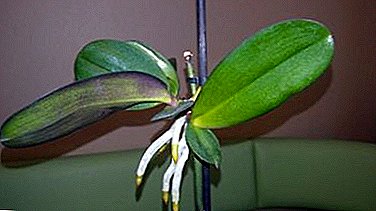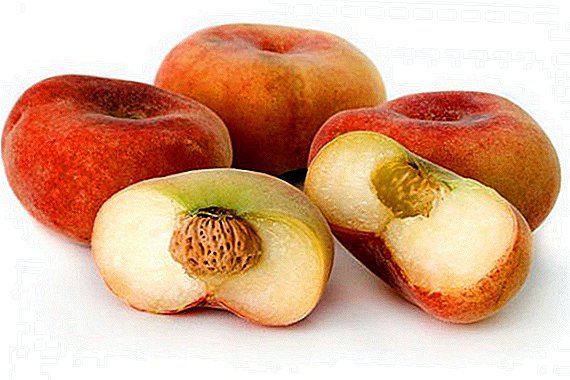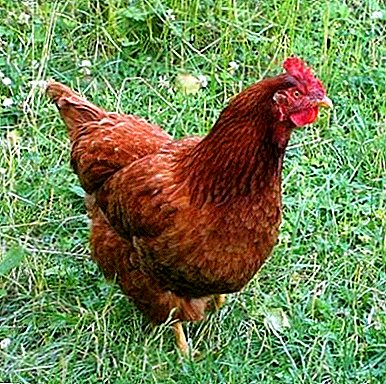
Poultry farming is one of the most profitable and least-cost branches of agriculture. If you decide to start a business of breeding poultry, or just start one in your compound, then you will certainly have a dilemma: what kind of bird to choose for breeding.
Most likely your choice will fall on the chicken, because it the most common and unpretentious poultry. But there are countless breeds of chickens, from which the head is spinning.
So that one cause of the headache becomes less, we will in more detail introduce you to a very well-known breed of chickens, which is called “New Hampshire”.
Initially, this breed of chickens appeared in the US states of Massachusetts and Rhode Island as a species of breed, "Red Rhode Island."
Since 1910, poultry breeders at the New Hampshire Agricultural Experimental Station have decided to focus on features such as fast plumage growth, rapid weight gain and rapid maturingand also on the fleshy structure of the body and the laying of large eggs. But the color of chickens was paid almost no attention.
By the early 1930s, due to its parameters, the breed deserved the popularity of poultry farms in the states of New Hampshire, Delaver, Virginia and Maryland. Over time, the special features of the New Hampshire breed were widely recognized.
In 1935, it was registered in The American Standard of Perfection, a special edition that describes all recognized breeds of poultry in North America.
In the USSR, this breed of chickens was introduced in the 1940s, where it was widely distributed. It is popular in modern Russia, especially in the southern regions.
Breed description New Hampshire
 Head and Neck. The head is of medium size, proportional to the size of the body. The neck is of medium thickness and length with rich plumage.
Head and Neck. The head is of medium size, proportional to the size of the body. The neck is of medium thickness and length with rich plumage.
The beak is reddish-brown, powerful, medium in size. The face is red, covered with delicate skin, smooth. The eyes are bright orange or red, large, lively.
Crest leaf-like, medium size, red, on the back of the head does not fit, has 4 or 5 uniform teeth. The lobes are almond-shaped, smooth, red. Earrings are smooth, without folds, identical in shape, of medium size.
Body. The body is wide, rounded, has a horizontal position. The back is wide, medium length, has a smooth arcuate rise to the tail. The tail of a medium-sized rooster with braids of medium length, is at an angle of 45 degrees to the line of the back.
The chicken is relatively wide, located at an angle of 35 degrees to the line of the back. The chest is full, wide, rounded. The belly is full, wide. The wings fit tightly to the body in a horizontal position.
Legs. Hocks straight, well spaced, yellow, covered with black-brown scales, of medium length. The tibiae are muscular, strong, stand out well, of medium length. Ring size chicken - 3, rooster - 2.
 Many people do not even know how much corn is boiled! But among them, no one who read our article.
Many people do not even know how much corn is boiled! But among them, no one who read our article.If you know how to store carrots in the cellar, you can easily save your crop. Read more here.
Plumage. Feathers tight to the body, strong, wide.
Coloring. In the rooster, the head and neck have a reddish-golden-brown color, the mane is lighter with a vertical dashed black pattern. The back and wings are brilliantly dark red-brown. Loins red-brown with glitter. The belly and chest is coppery brown. On the tail there are black, black with green tint, dark chestnut and chestnut brown.
All plumage should be very bright. Pooh salmon. The hen as a whole repeats the color of the rooster, but its feathering tone is lighter and more uniform. The downy day-old chickens of this breed have a lighter color than that of the "Red Rhode Island" breed, but are generally identical.
Features
 Chickens very quickly fled and mature. Chickens rush plentifully and regularly. They are calm and friendly, so it is very easy to tame.
Chickens very quickly fled and mature. Chickens rush plentifully and regularly. They are calm and friendly, so it is very easy to tame.
Usually they calmly walk around the yard or go to a run with danger or heightened interest in something. But they fly badly, so there is no need to construct a high fence.
In general, they do not show aggression towards each other and are rather tolerant of other creatures. They are curious, trusting and beautiful. They have a reduced tendency to incubate chickens, but if this happens, they become good moms.
May be acts of mutual aid, replacing temporarily the hen. Usually they are looking for secluded places, not wanting to be carried in a place prepared for laying eggs.
New Hampshire Chicken Good rush in winter. Not bad they endure cold, the only thing is that their scallops are very susceptible to frostbite, so you should be careful.
A photo



Invalid Defects
Representatives of the breed are rejected if they have the following flaws.
- Body shape is different from the standard.
- Comb less or more than normal.
- Eye color is different from the norm.
- There is white bloom on the lobes.
- The color of the plumage is too dark or light, too uneven coloring of the upper part of the body of the bird, there is no gloss in the plumage of the rooster.
- Excessive black pattern on the mane of a rooster or its absence in a hen.
- There are black dots on the wings.
- Pooh gray-black color.
- White skin, yellow beak and feet, a strong yellow patina on the plumage.
Content and cultivation
 The content of chickens of this breed is usually no big inconvenience. They are hardy, resistant to temperature extremes, adapted to difficult weather conditions.
The content of chickens of this breed is usually no big inconvenience. They are hardy, resistant to temperature extremes, adapted to difficult weather conditions.
Their calm disposition allows for content in the cell. In this case, you only need to pour sand on the floor to reduce the level of humidity in the room, as well as the convenience of cleaning the cage.
As for food, here these chickens unpretentious. At first, the chickens are fed boiled eggs. Then add potatoes, carrots, beets, yeast, greens, wheat bran and cereals. At the age of two months they begin to give corn.
Adults must eat greens, vegetables, roots, yeast, clover and fish meal, chicken, grain crops, eggshells (prevents stagnation of food and compensates for the lack of calcium).
Layers are fed food rich in easily digested protein and vitamins, for example, grain or ready-made feed for poultry.
Some poultry farmers mix sand with food, the hard particles of which have a beneficial effect on the digestion of chickens.
Specifications
 Depending on the age, the live weight of the chicken is about 2.1 - 3 kg, the rooster - 3.25 - 3.75 kg. During the first year of productivity, the chicken may postpone about 200 eggs. Then productivity gradually decreases (up to 140 eggs in the third year).
Depending on the age, the live weight of the chicken is about 2.1 - 3 kg, the rooster - 3.25 - 3.75 kg. During the first year of productivity, the chicken may postpone about 200 eggs. Then productivity gradually decreases (up to 140 eggs in the third year).
The eggs have a yellow-brown color, although some individuals may carry eggs of a dark brown color. Egg weight - 58-60 g. On average, about 86% of young and 92% of adult individuals survive.
Analogs
This, first of all, should include the "parent" of the breed "New Hampshire" - "red rhode island". There are only a few differences between them. The latter has a darker coloring of the plumage.
Chickens of this breed are more designed for laying eggs than for meat. Their body has less triangular outlines. And they also slower fledge, grow and mature.
In the 1920s. Andrew Christie bred a new breed based on the New Hampshire breed, she got the name of her discoverer - "Christie"They were bigger and brighter than their" ancestors ", and were also very energetic and elegant. He even used a separate word to denote their energy - spizzerinktum (i.e." energy is in full swing ").
Another breeder, Clarence Newcammer, in the 1940s. bred breed with a saturated color, prone to increased laying of eggs, which was also named in his honor. However, in our time to meet these breeds is a huge success, because the number of individuals was small, and they did not find great popularity and did not receive wide distribution.
So, we can say that the breed of chickens "New Hampshire" one of the best options for the poultry farmerbecause it combines great fecundity with a large mass of live weight. The low mortality rate of individuals provides a stable population growth.
Behavioral characteristics and unpretentiousness to food and weather conditions provide virtually trouble-free breeding throughout the year. And, of course, do not forget about the aesthetic component. The grace and beauty of these birds will always delight the soul.




